13 November, 2003
Melt!
Temperature: 18*F
Location: Lake Hoare, Dry Valleys
I arrived at the helo (helicopter) pad at 8:15 am for a 9:00 am flight.
I, and all my gear, was weighed and I was issued a helmet. The other
five passengers and I were all briefed on helicopter safety and procedures.
We were airborne right on time. What a magnificent view! The Ross Ice
Shelf extended for miles into the distance. As we approached the
ice/sea zone, huge icebergs were seen imbedded in the ice shelf. They
reminded me of an abominable snowman trying to march through the ice.
We flew over the jagged peaks of the mountain range and entered into the
valley. The barren U-shaped valleys which had been scoured by previous
glaciers were splattered with large boulders which have tumbled off the
cliff edges. This entire area has been pulverized by glaciers in the
past, the loose tallus sits precariously on the cliff edges - just
waiting for a trigger to set gravity in motion.
Entering from the edges of the cliffs are valley glaciers that ooze into
the lower elevations. We are calling the edge of the Canada Glacier and
Lake Hoare home for the next several days. My tent is set at the crest
of a sediment mound right in front of the glacier! I can hear the ice
creaking and popping as the glacier moves. The front wall of the
glacier is riddled with large gaps, like vertical crevasses. It seems
as though the glacier could speak to us through those cracks!
We got right to work. Cables on one of the monitoring stations had
frozen into the ice during the winter season; these cables needed to be
set free. Peter, Phil, and Roman had drilled a hole through the 4
meters of ice and sunk a "hot finger" into the hole to start melting the
ice that had the cables bound. A "hot finger" is a metal coil that is
attached to two hoses that are attached to a heater; which is powered by
a generator. The hot finger system is filled with glycol. The heater
warms the glycol and sends it down the tube to the hot finger. The
glycol then circulates through the hot finger and returns to the heater
to be re-heated. Any ice touching the warm hose or the hot finger will
melt. This system, therefore, can be used to free the frozen cables
from their ice shackle!
While the heater worked on freeing the cables, we went to two other
monitoring sites to retrieve data from their storage banks and import
the data into the computer. These monitoring stations are recording
water temperature and pressure at several different levels in the lake.
We also went to measure the ablation rate at several different sites.
Lake ice is ablated, or removed, from the surface of the ice. It is
ablated by wind and solar energy. As the surface gets removed, the
lower levels freeze. This process brings material from the bottom of
the lake ice towards the surface. Peter has inserted poles into the
lake ice. Each year, the amount of exposed pole is measured which
correlates to the ablation rate at that location.
Ablation also accounts for the rugged lake surface. Wind blows
sediments onto the lake. The sun warms the sediments which then melt
the surrounding ice, causing the sediment to sink in deeper. The
process also happens with snow blowing onto parts of the lake. This
differential in melting rates causes the surface of the lake to become
chiseled into amazing ice sculptures. We got our measurements and
headed back to camp.
Peter and Phil went back out to the melting hole to drop in an
underwater camera and view how the melting was going. It was during
this "check" that Peter realized the buoy which had the cables attached
to it seems to have shifted it's location. One possible explanation for
this is that the ice has moved. This lead to an evening of
contemplating the possibilities and making a plan to test the
possibility. Science is a never ending pursuit of understanding the
world around us; it's exciting to be part of the process as it unfolds!
Still having the time of my life!
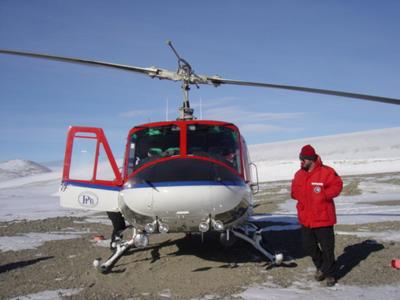
1. The Bell 212 helicopter that took me to the Dry Valleys.

2. Home for the next few days!
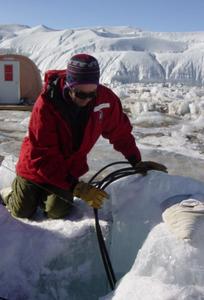
3. Peter adjusting the glycol heating system to melt out cables that have frozen into the ice over winter.
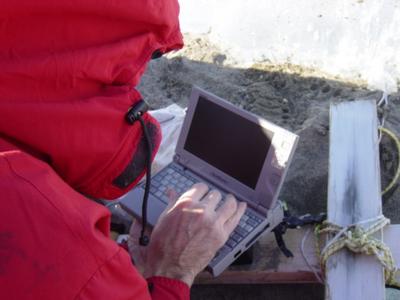
4) Getting ready to retrieve data.
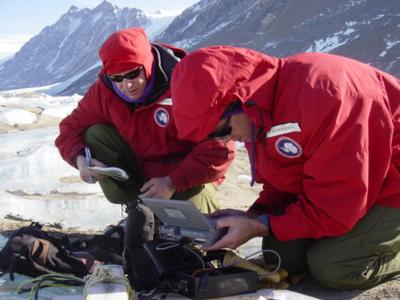
5. Peter and Phil collecting some data.
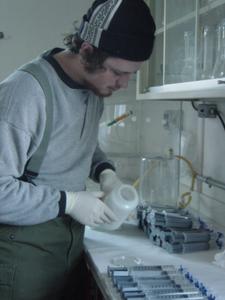
6. Roman, the "potion man" preparing some syringes for sample collections.

7. The underwater camera used to see what's going on under the ice.
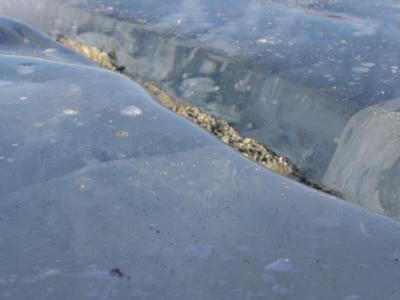
8. Sediments melting into the ice.
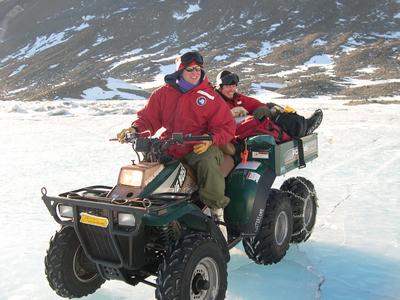
9. Phil and Roman heading out for an afternoon of work.
Contact the TEA in the field at
.
If you cannot connect through your browser, copy the
TEA's e-mail address in the "To:" line of
your favorite e-mail package.
|
